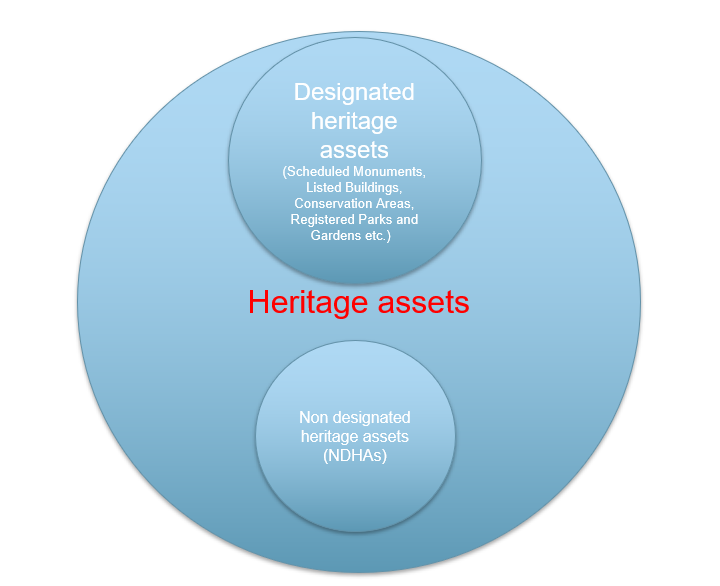Local lists play an important role in identifying non-designated heritage assets, and celebrating and reinforcing a sense of local character and distinctiveness. Local lists can be used to recognise what communities value about their places and ensure this is considered as part of the planning process.
What is local listing?
Historic England advice says that the preparation of a local list is 'a way for communities, neighbourhood plan-making bodies and local planning authorities to identify and celebrate the historic buildings, places and spaces, archaeological sites and historic parks, gardens and other designed landscapes which enrich and enliven their area'. Put simply, Local Listing aims to celebrate local distinctiveness and helps to protect the character of individual areas.
Local lists are made up of non-designated heritage assets which the Planning Practice Guidance defines as 'buildings, monuments, sites, places, areas or landscapes identified by plan making bodies as having a degree of heritage significance meriting consideration in planning decisions but which do not meet the criteria for designated heritage assets'. Non-designated heritage assets are different from designated assets - listed buildings, conservation areas, scheduled monuments and parks and gardens - which are largely identified by Heritage England and approved by central government.
Sites that are locally listed cover a wide range of heritage assets, from historic buildings and structures to landscapes, street furniture, historic and archaeological sites. Some examples are shown at the bottom of the page.
Local lists are made up of non-designated heritage assets which the Planning Practice Guidance defines as 'buildings, monuments, sites, places, areas or landscapes identified by plan making bodies as having a degree of heritage significance meriting consideration in planning decisions but which do not meet the criteria for designated heritage assets'. Non-designated heritage assets are different from designated assets - listed buildings, conservation areas, scheduled monuments and parks and gardens - which are largely identified by Heritage England and approved by central government.
Sites that are locally listed cover a wide range of heritage assets, from historic buildings and structures to landscapes, street furniture, historic and archaeological sites. Some examples are shown at the bottom of the page.

How do I get something locally listed?
Assets that are important to a local community can be nominated on this site and will assessed by the council for addition to the local list. The assessment will be against the published criteria which measure archaeological, architectural, historic and communal value. Historic England guidance says that 'a substantial majority of buildings have little or no heritage significance and thus do not constitute heritage assets. Only a minority have enough heritage significance to merit identification as non-designated heritage assets'.
Locally listed buildings can also be identified through the planning process when an application is submitted, through conservation areas designation, neighbourhood plan preparation and local plan site allocations. A local list provides certainty on the location and significance of NDHAS and is available for communities, developers and decision-makers, ensuring that they are given due consideration when change is proposed.
Locally listed buildings can also be identified through the planning process when an application is submitted, through conservation areas designation, neighbourhood plan preparation and local plan site allocations. A local list provides certainty on the location and significance of NDHAS and is available for communities, developers and decision-makers, ensuring that they are given due consideration when change is proposed.
What difference does local listing make?
Planning protection for non-designated heritage assets is not as strong as those for designated heritage assets. Non-designated heritage assets are a 'material consideration' in the planning process requiring 'a balanced judgement' in the determination of planning application 'having regard to the scale of any harm or loss and the significance of the heritage asset' (paragraph 203, National Planning Policy Framework). The full range of Permitted Development (PD) rights will continue to apply to a ‘locally listed’ building, unless it is in a conservation area – in which case the same slightly reduced PD rights as apply to other unlisted buildings in a conservation area will continue to apply to the ‘locally listed’ buildings within that area. If the LPA wishes to restrict or remove PD rights, they can do so only by making an Article 4 Direction applying to a specific building or buildings or to a specified area within the district.
Where can I find out more?
For more information about the policy background and governance of local lists for West Yorkshire see [links to the policy docs for each LPA]
NPPF_Sept_23.pdf (publishing.service.gov.uk)
historicengland.org.uk/images-books/publications/local-heritage-listing-advice-note-7/heag301-local-heritage-listing/
NPPF_Sept_23.pdf (publishing.service.gov.uk)
historicengland.org.uk/images-books/publications/local-heritage-listing-advice-note-7/heag301-local-heritage-listing/
Governance
Find out more about the governance of each local authority's local list:
Bradford:
Calderdale:
Kirklees:
Leeds:
Wakefield:
Bradford:
Calderdale:
Kirklees:
Leeds:
Wakefield:
